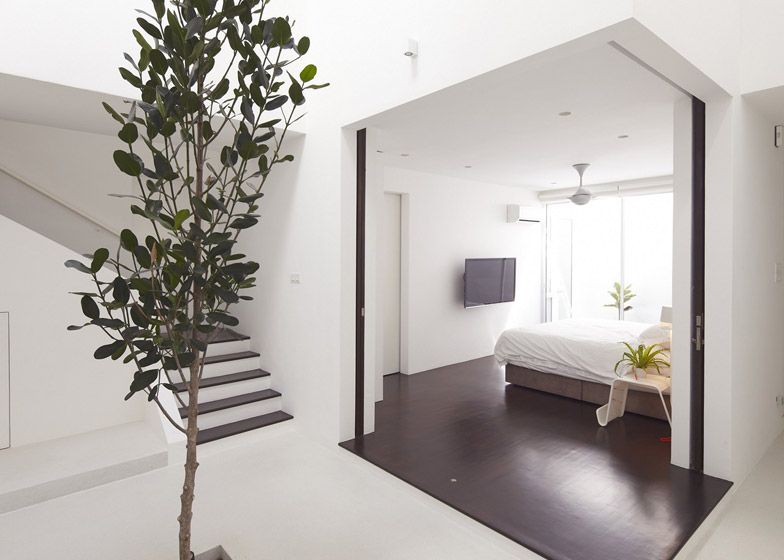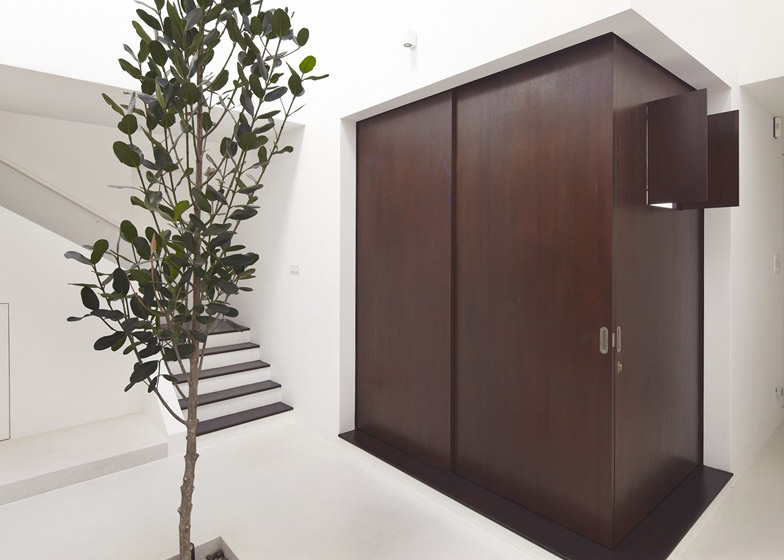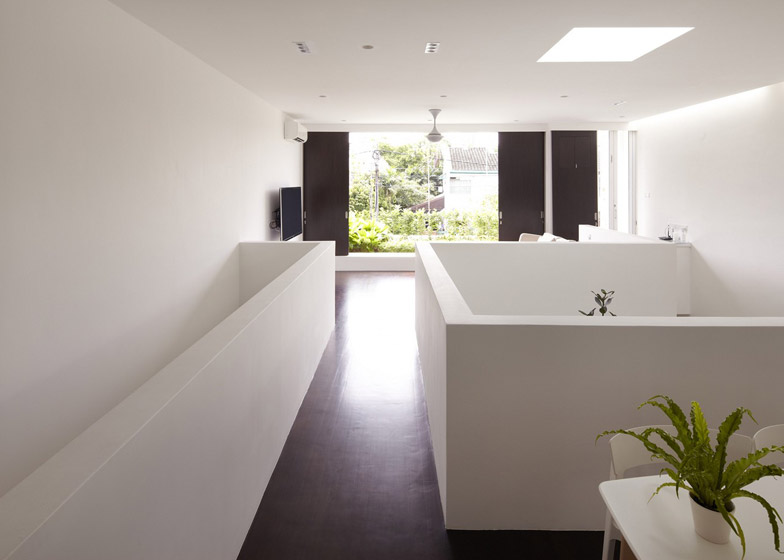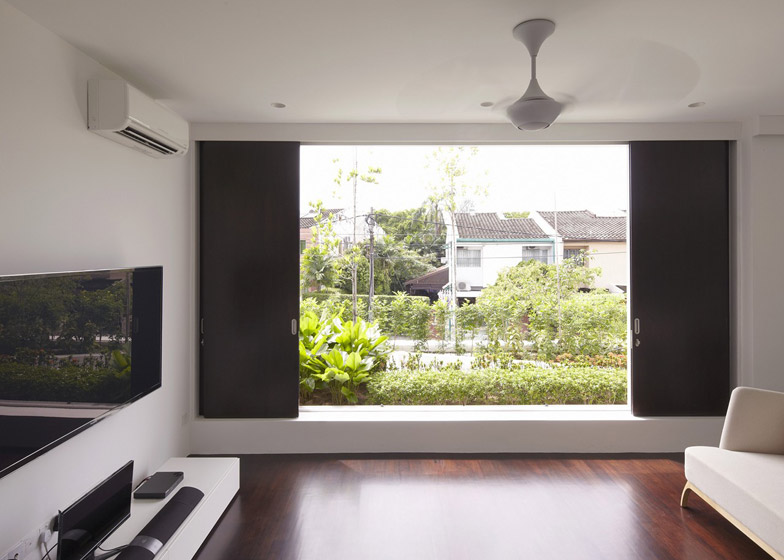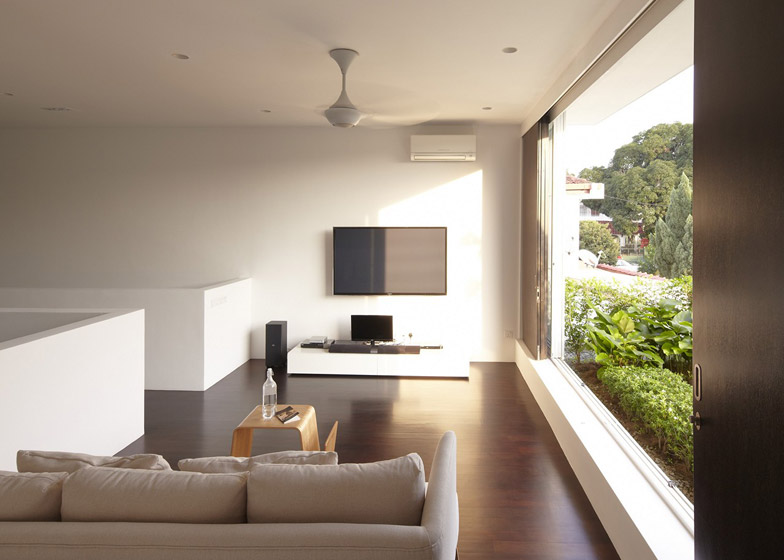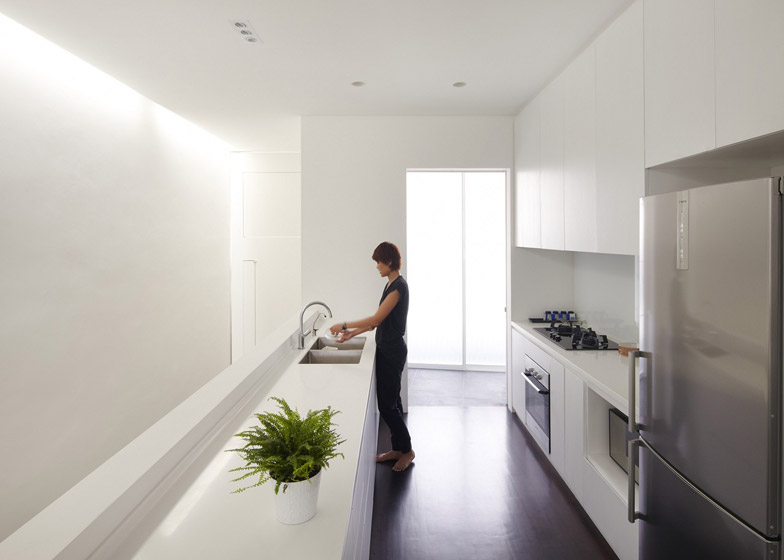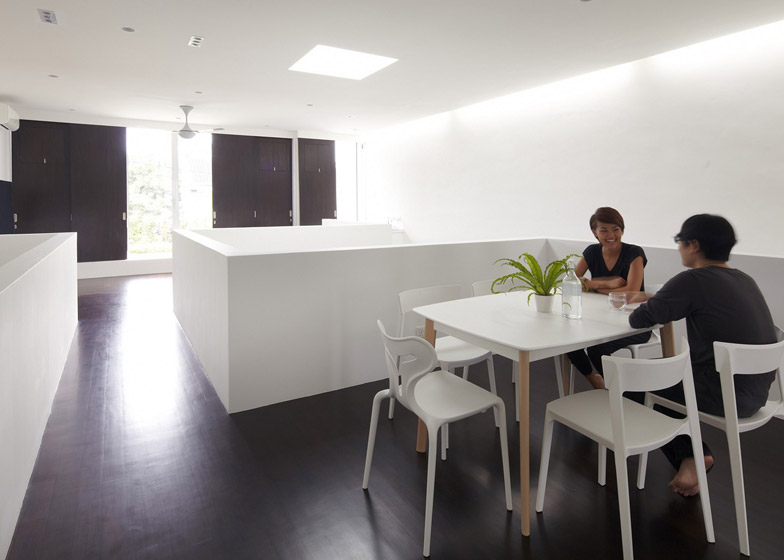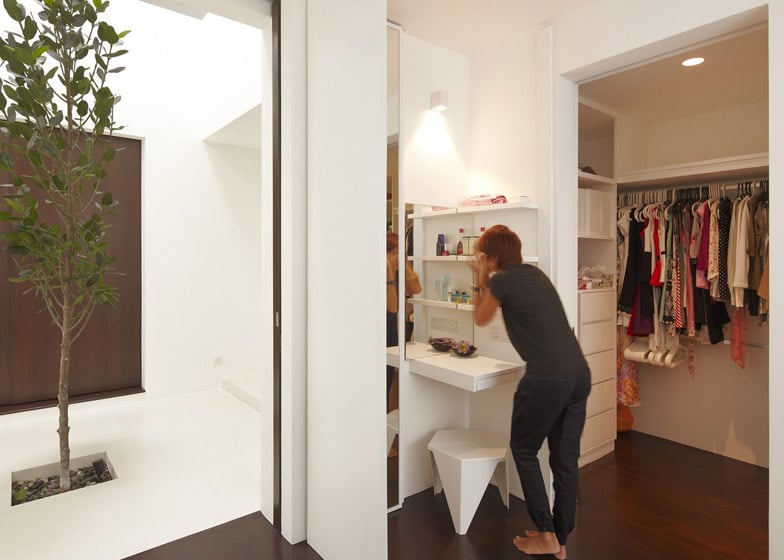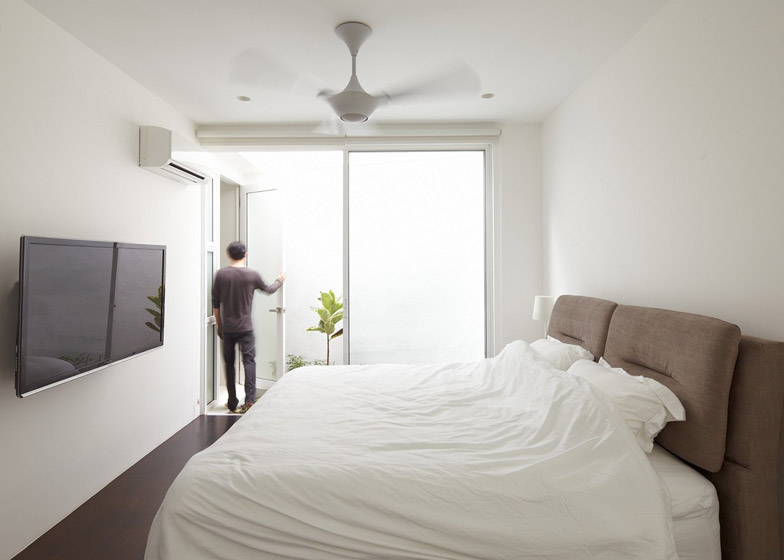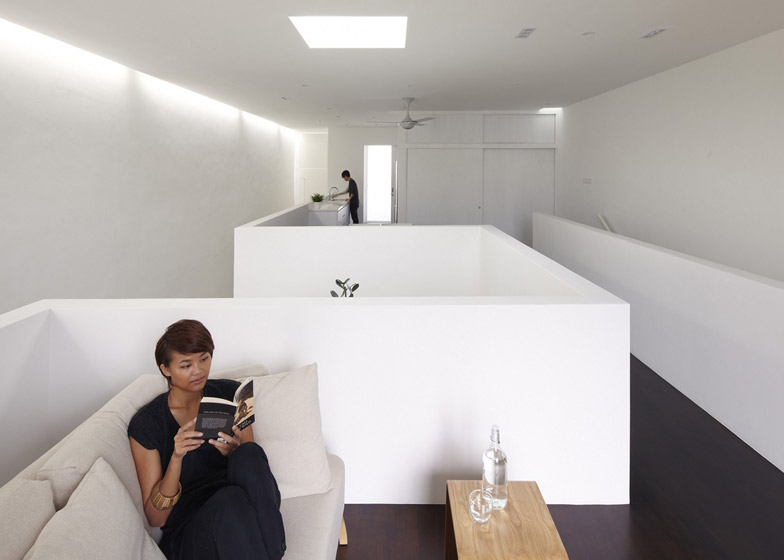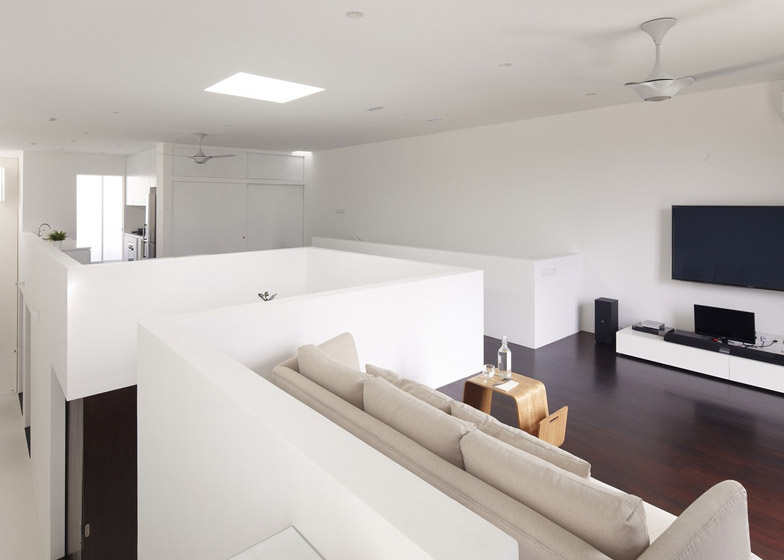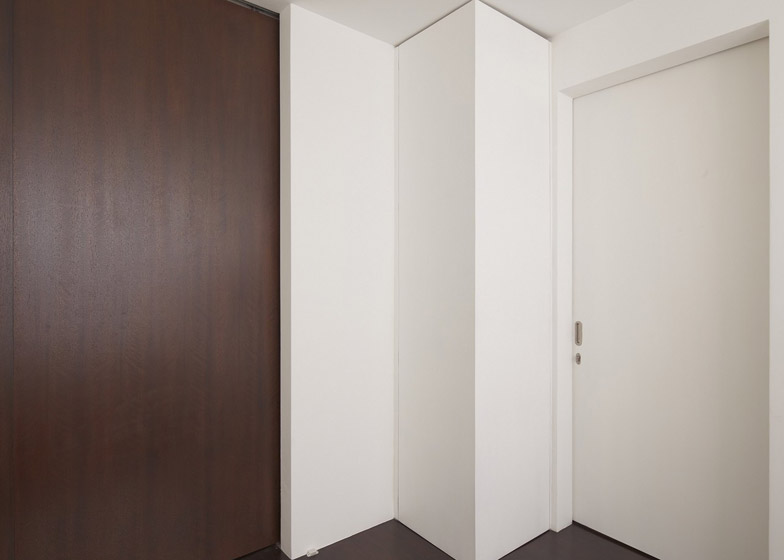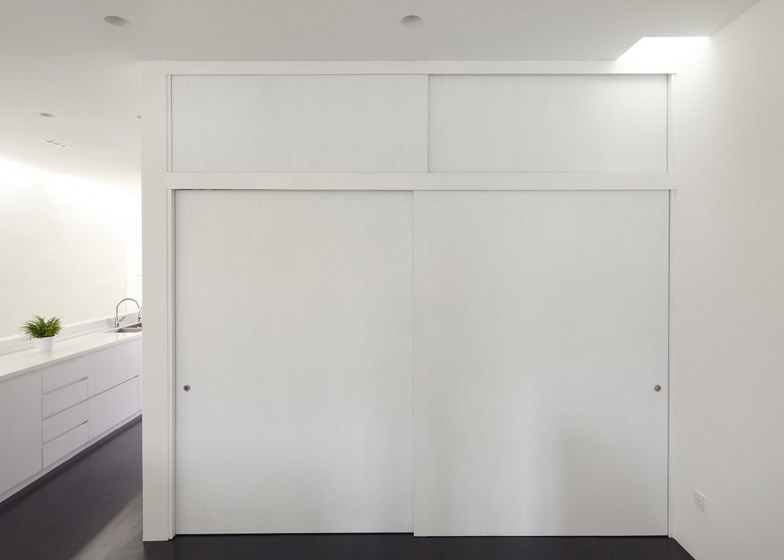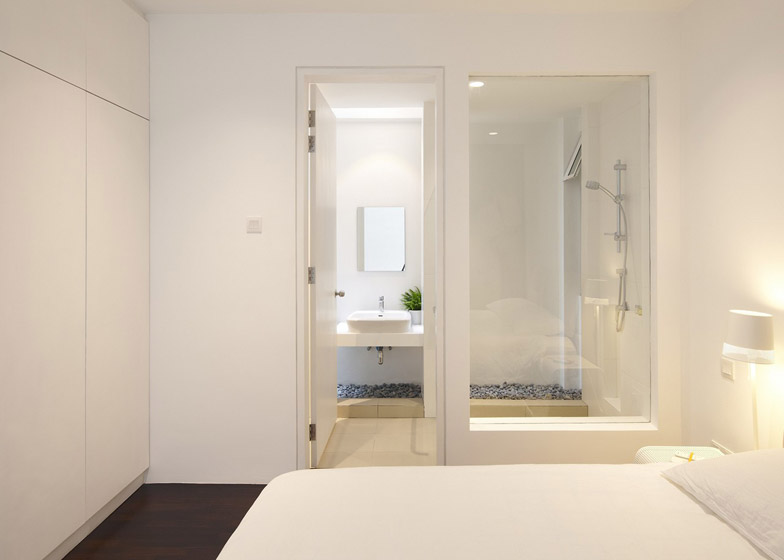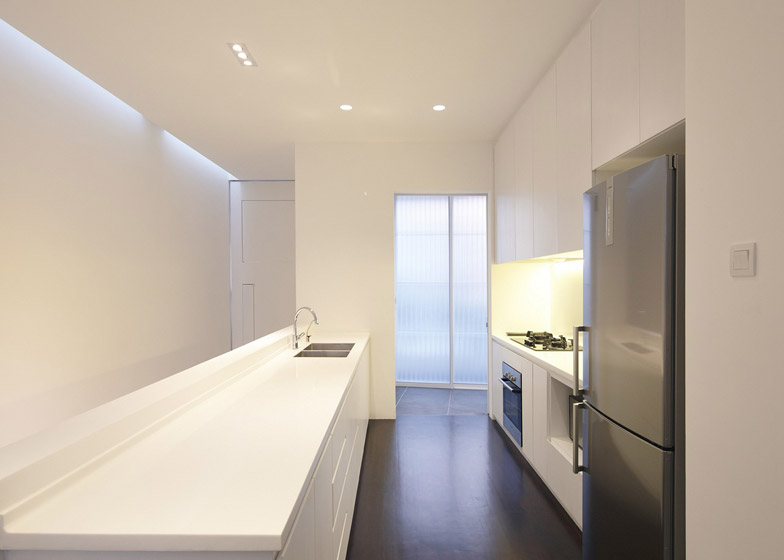This Kuala Lumpur home has bedrooms with corners that slide open, an indoor tree and voids between the floors to make the interior feel more like an outdoor space (+ slideshow).
Ittka House was designed by Kuala Lumpur-based architect Fabian Tan for a couple in their 30s, and replaces a more traditional terraced house on the site.
"They asked for a modern house, but had no other expectations, and left me to my own devices," Tan told Dezeen. "The only thing they specified was to have more bedrooms to accommodate frequent visits from relatives."
Temperatures in the Malaysian capital average from 22 degrees Celsius (71.6 degrees Fahrenheit) to 32 degrees Celsius (89.6 degrees Fahrenheit), and downpours are frequent, so Tan designed the two-storey terraced house with internal spaces that feel more like outdoor spaces.
On the ground floor, two of the four bedrooms feature sliding panels so that the corners can be opened up to a central courtyard-style space where a small tree is planted.
"I wanted it to feel as though you are outside when you come out of the bedroom," said Tan. "Malaysian weather can get extremely hot and humid, so people rarely go outside to the garden in the daytime."
Tan used similar sliding elements in a previous project, which includes a movable timber screen around a circular living room so it can be transformed into a sheltered outdoor terrace.
"Architecture for me is not fixed in nature," he said. "I always see movement, not only in the architectural components, but also in the light, the tension between the materials, and the human activities."
The upper floor has a kitchen, dining room and living space, which are arranged around the ground floor's double-height corridor, so the owners can look down to the bedrooms below and carry on conversations between the two floors.
"In a typical house, the living space would be on the ground floor, and a staircase would lead to a corridor upstairs connecting the bedrooms. When I reversed this and put the bedrooms downstairs, I was able to make the corridor double-height, so that it connects with the living spaces above," said Tan.
Rooflights and small gardens have been added around the periphery of the house to bring a sense of the outdoors inside. A roof garden outside the living room partially screens the house from the gaze of passersby, and the corridor on the ground floor leads to a 1.8-metre-square terrace at the back.
"The intention of this terrace was to expand the space at the rear of the house," said Tan.
The rear terrace is accessed by a six-metre-tall door with separate panels that can be opened or closed to control the amount light and ventilation coming inside. The sliding bedroom doors also feature panels at the top that can be opened to provide ventilation.
White terrazzo flooring was used downstairs to match the white walls, and merbau wood – a dark-coloured timber that grows in the region – was used for the floors upstairs, as well as the sliding doors on the bedrooms.
"Basic material finishes were chosen with restraint, so as to not accentuate any part of the whole," said Tan. "The intention was to create a calm space defined purely by volume, depth and light."
Inward-looking designs and gardens are especially relevant for urban homes in tropical climates, where the lack of space and harsh heat make outdoor living difficult. Other examples featured on Dezeen include a narrow house in Ho Chi Minh City built around a curved lightwell and a Tokyo townhouse with a stack of gardens on its balconies.
Ittka House was built with a concrete frame and brick infill – a common construction method in Malaysia, according to Tan – and was completed in a year.
Photography is by Eiffel Chong.

